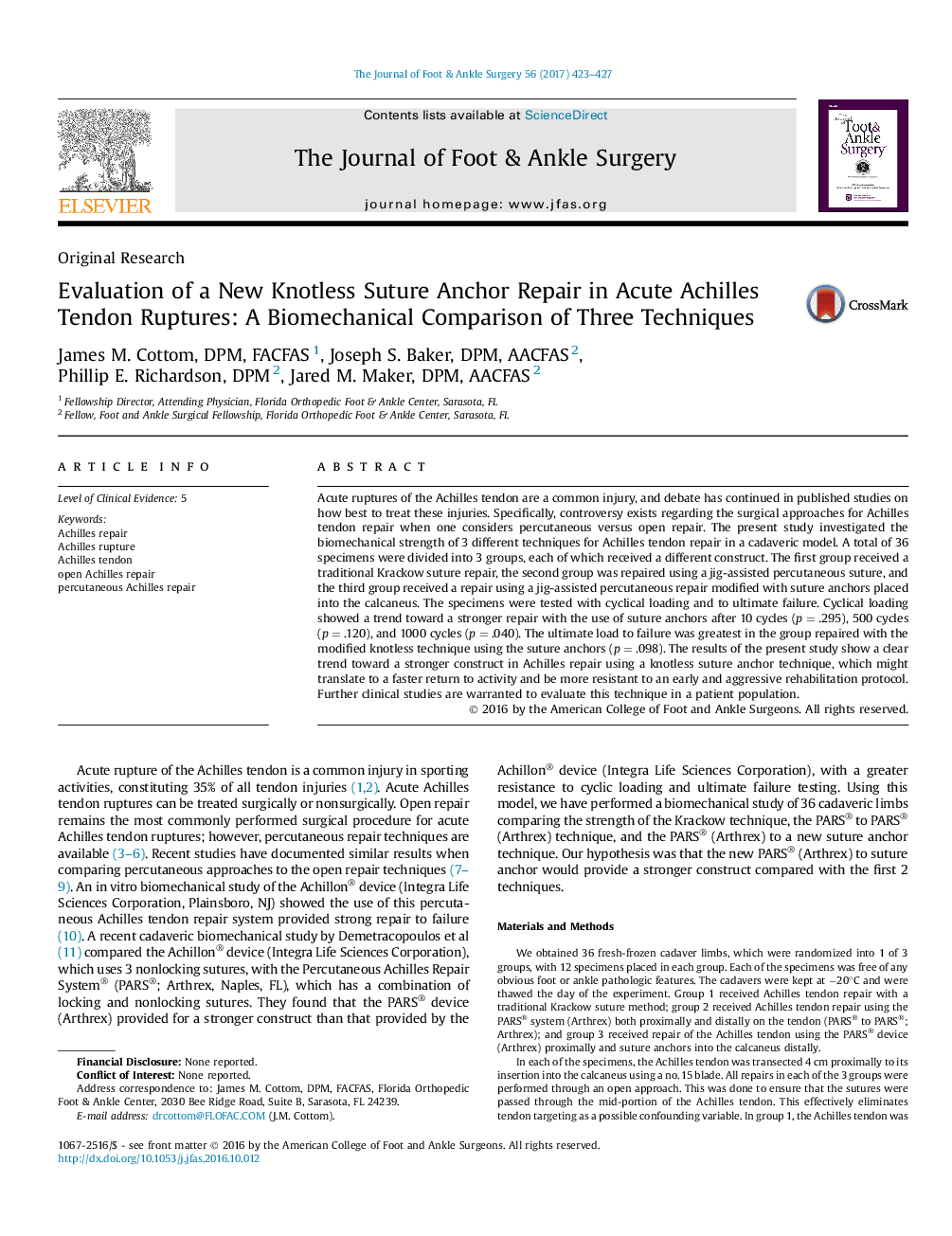| Article ID | Journal | Published Year | Pages | File Type |
|---|---|---|---|---|
| 5576013 | The Journal of Foot and Ankle Surgery | 2017 | 5 Pages |
Abstract
Acute ruptures of the Achilles tendon are a common injury, and debate has continued in published studies on how best to treat these injuries. Specifically, controversy exists regarding the surgical approaches for Achilles tendon repair when one considers percutaneous versus open repair. The present study investigated the biomechanical strength of 3 different techniques for Achilles tendon repair in a cadaveric model. A total of 36 specimens were divided into 3 groups, each of which received a different construct. The first group received a traditional Krackow suture repair, the second group was repaired using a jig-assisted percutaneous suture, and the third group received a repair using a jig-assisted percutaneous repair modified with suture anchors placed into the calcaneus. The specimens were tested with cyclical loading and to ultimate failure. Cyclical loading showed a trend toward a stronger repair with the use of suture anchors after 10 cycles (p = .295), 500 cycles (p = .120), and 1000 cycles (p = .040). The ultimate load to failure was greatest in the group repaired with the modified knotless technique using the suture anchors (p = .098). The results of the present study show a clear trend toward a stronger construct in Achilles repair using a knotless suture anchor technique, which might translate to a faster return to activity and be more resistant to an early and aggressive rehabilitation protocol. Further clinical studies are warranted to evaluate this technique in a patient population.
Keywords
Related Topics
Health Sciences
Medicine and Dentistry
Orthopedics, Sports Medicine and Rehabilitation
Authors
James M. DPM, FACFAS, Joseph S. DPM, AACFAS, Phillip E. DPM, Jared M. DPM, AACFAS,
